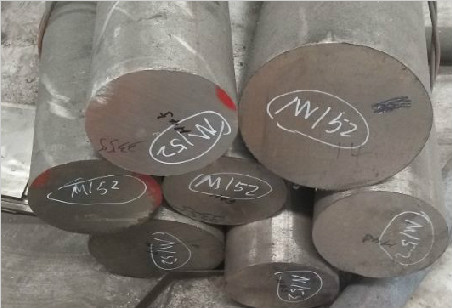
Z12CNDV12-03/KT5312AS6 Forged Bar
- Smelting Method:
- Delivery status: Forged 、
- Dimensions: OD:Φ200mm
- Surface: Peeled 、
- Standard: AFNOR
Quick Details
Z 12 CNDV 12-03 is a new type of martensitic stainless steel for the last-stage blades of large-capacity nuclear and thermal power turbines The deformation behavior of this steel was studied by thermal compression experiments that performed on a Gleeble-
Stock Status
Product Details
Z 12 CNDV 12-03 is a new type of martensitic stainless steel for the last-stage blades of large-capacity nuclear and thermal power turbines. The deformation behavior of this steel was studied by thermal compression experiments that performed on a Gleeble-3500 thermal simulator at a temperature range of 850°C to 1200°C and a strain rate of 0.01s-1 to 20s-1. When the deformation was performed at high temperature and low strain rate, a necklace type of microstructures was observed, the plastic deformation mechanism is grain boundary slip and migration, when at low temperature and lower strain rate, the slip bands were observed, the mechanism is intracrystalline slips, and when at strain rate of 20s-1, twins were observed, the mechanism are slips and twins. The Arrhenius equation was applied to describe the constitutive equation of the flow stress. The accuracy of the equation was verified by using the experimental data and the correlation coefficient R2 = 0.9786, and the equation can provide reasonable data for the design and numerical simulation of the Z12CNDV12-03 forging process.
Z 12 CNDV 12-03 is a new type of martensitic stainless steel for the last-stage blades of large-capacity nuclear and thermal power turbines. The deformation behavior of this steel was studied by thermal compression experiments that performed on a Gleeble-3500 thermal simulator at a temperature range of 850°C to 1200°C and a strain rate of 0.01s-1 to 20s-1. When the deformation was performed at high temperature and low strain rate, a necklace type of microstructures was observed, the plastic deformation mechanism is grain boundary slip and migration, when at low temperature and lower strain rate, the slip bands were observed, the mechanism is intracrystalline slips, and when at strain rate of 20s-1, twins were observed, the mechanism are slips and twins. The Arrhenius equation was applied to describe the constitutive equation of the flow stress. The accuracy of the equation was verified by using the experimental data and the correlation coefficient R2 = 0.9786, and the equation can provide reasonable data for the design and numerical simulation of the Z12CNDV12-03 forging process.